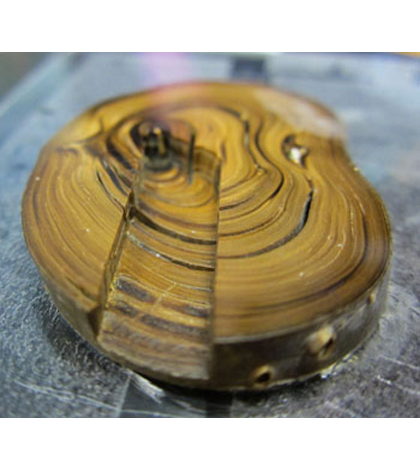New study shows coral records historical oceanic nitrogen changes

Layers of coral skeleton laid down over the past 1,000 years can be seen in this polished section of a deep sea coral. (Photo by M. McCarthy)
A study of Pacific deep sea corals shows that the small marine organisms provide a record for changes in nitrogen cycling in the ocean since 1850, according to a release from the University of California Santa Cruz.
Matthew McCarthy, professor of ocean sciences at the University of California Santa Cruz, said the coral are capable of recording changes in sediment contents with much more detail than any other natural process. Even sediment cores do not give as much fine detail about conditions in the relatively recent past.
Researchers studying the coral found subsurface nitrogen started decreasing around 1850 along with the phytoplankton that consumed it. Nitrogen fixing cyanobacteria began to dominate the ecosystem, feeding on nitrogen diffusing through the ocean’s surface.
The change may be due to warmer, larger and more stratified water in the North Pacific Subtropical Gyre.
Image: Layers of coral skeleton laid down over the past 1,000 years can be seen in this polished section of a deep sea coral. (Photo by M. McCarthy)





0 comments